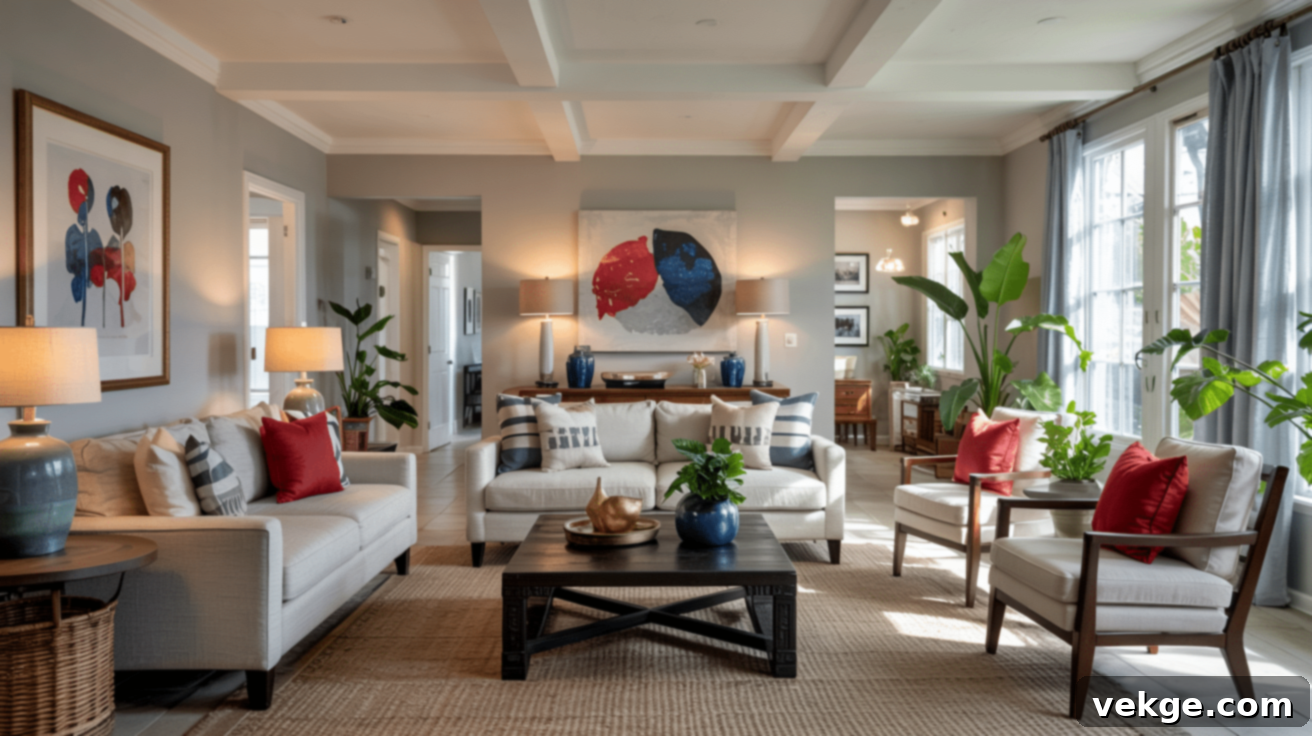Mastering the Accented Neutral Color Scheme: Your Ultimate Guide to Stylish Home Decor
Are you yearning for a home environment that effortlessly blends tranquility with vibrant personality? Do you find yourself drawn to sophisticated interiors that feel both inviting and impeccably styled? If so, the accented neutral color scheme might be the perfect solution for your design aspirations.
Many homeowners struggle with integrating color into their spaces, often feeling overwhelmed by bold choices or unsure how to introduce pops of color without creating visual chaos. This comprehensive guide is designed to demystify the art of working with neutrals and accents. We’ll show you how to leverage the serene power of neutral colors as a foundational backdrop, then strategically infuse accent colors to create a perfectly balanced, engaging, and welcoming atmosphere throughout your home.
From the cozy confines of your living room to the intimate sanctuary of your bedroom, the functional heart of your kitchen, and the refreshing calm of your bathroom, we’ll guide you through selecting the ideal hues and applying them with confidence. By the end of this article, you will possess a clear understanding and practical tools to transform any room with an accented neutral color scheme, crafting a space that truly reflects your style and provides a comforting retreat.
What is an Accented Neutral Color Scheme?
At its core, an accented neutral color scheme is a sophisticated approach to interior design that uses a foundation of neutral colors, complemented by carefully chosen bright or bold accent colors to introduce visual interest and personality. Neutral colors typically include timeless shades such as white, cream, beige, taupe, gray, and black. These versatile hues serve as a calming canvas, providing a soothing backdrop that allows the accent colors to truly shine.
Accent colors, on the other hand, are the vibrant punctuation marks in your design story. They can be anything from the tranquil blues of the ocean to the refreshing greens of nature, the energetic yellows of sunshine, or the passionate reds of a sunset. The magic of this scheme lies in its inherent balance: the neutral tones offer a sense of calm and stability, while the accent colors inject life, depth, and character, preventing the space from feeling bland or monotonous. This harmonious interplay creates an environment that feels both serene and lively, chic and comfortable.
Understanding Neutral Colors: Warm vs. Cool Undertones
Neutral colors are far from one-dimensional; they possess distinct undertones that can dramatically influence the mood and perception of a room. Generally, neutral colors fall into two main types: warm and cool. Choosing the right type of neutral base is crucial for setting the desired ambiance in your space.
Warm neutrals, such as creamy whites, rich beiges, earthy browns, and inviting taupes, carry undertones of yellow, orange, or red. These hues evoke a sense of coziness, comfort, and invitation, making a room feel intimate and welcoming. They are exceptionally well-suited for social spaces like living rooms, dining areas, and bedrooms, where a comfortable and nurturing atmosphere is paramount. Imagine a living room with soft beige walls, a warm brown sofa, and perhaps a touch of deep terra cotta. This combination instantly wraps you in a feeling of warmth and relaxation.
Conversely, cool neutrals, including crisp whites, various shades of gray, and profound blacks, have undertones of blue, green, or purple. These colors tend to create a calm, sleek, and modern aesthetic. They are ideal for spaces where you desire a clean, expansive, and sophisticated look, such as kitchens, bathrooms, offices, or contemporary living areas. A cool gray kitchen with white countertops and chrome accents, for example, radiates a fresh and minimalist vibe, promoting clarity and a sense of order.
Consider the natural light in your room as well: a north-facing room with cooler light might benefit from warm neutrals to prevent it from feeling too stark, while a south-facing room bathed in warm light can beautifully carry off cooler neutrals without feeling cold.
Choosing the Right Accent Colors to Elevate Your Space
Once your neutral foundation is established, the exciting part begins: selecting the perfect accent colors. The key to successful accenting is to consider the mood you wish to cultivate in the room. Softer, muted shades are excellent for fostering a calm and peaceful vibe, promoting relaxation and focus. In contrast, bolder, more saturated colors are ideal for injecting energy, excitement, and a sense of dynamism into a space.
When selecting your accent hues, think about the overall palette and how each color contributes to the desired feeling. Here are some popular accent colors and their typical impacts within neutral schemes:
-
Blues: From serene sky blues to deep navy, blues are inherently calming and evoke feelings of tranquility and stability. Lighter blues are perfect for creating a refreshing, airy feel in bedrooms or bathrooms, while deeper blues can add sophistication and depth to a living room or study.
-
Greens: Reflecting nature, greens bring a sense of freshness, growth, and balance. Sage green offers a soothing, organic touch ideal for bedrooms or offices, while a vibrant emerald or lime green can energize a living room or kitchen, connecting the indoors with the outdoors.
-
Reds: Powerful and passionate, reds are ideal for adding warmth, energy, and a touch of drama. A rich burgundy or a fiery scarlet can stimulate conversation in dining areas, create a striking accent wall, or add a bold focal point with decorative accessories in a neutral living space.
-
Yellows: Radiating cheerfulness and optimism, yellows can instantly brighten any room. Soft butter yellow provides a gentle warmth, while a vibrant lemon yellow can add a playful and energetic pop, particularly effective in kitchens or children’s rooms.
-
Oranges: A blend of red’s energy and yellow’s happiness, oranges offer warmth, enthusiasm, and a touch of exoticism. From subtle terracotta to bold tangerine, orange accents can create a cozy and inviting feel, especially in autumnal or bohemian-inspired neutral schemes.
-
Purples: Associated with luxury, creativity, and spirituality, purples can add a touch of sophistication and elegance. A soft lavender or lilac can create a restful bedroom, while a deep plum or royal purple can introduce drama and richness in a living room or dining area.
Remember that the saturation and brightness of your chosen accent color also play a significant role. A pastel blue will have a different impact than a royal blue, even though both are blue. Test swatches and samples in your actual space under different lighting conditions before committing.
The 60-30-10 Rule: Balancing Neutrals and Accents for Harmony
To achieve a truly harmonious and visually appealing design with an accented neutral color scheme, the 60-30-10 rule serves as an invaluable guideline. This simple yet effective principle helps distribute colors in a way that feels organized, balanced, and aesthetically pleasing, ensuring that no single color overwhelms the others.
The beauty of the 60-30-10 rule lies in its ability to create a clear visual hierarchy, guiding the eye smoothly through the space. It helps maintain a pleasing balance, allowing each color to contribute to the overall ambiance without competing for attention. Here’s how this widely adopted design rule works:
- 60% – Dominant Color (Neutrals): This percentage represents the dominant color in your room, which should be one of your chosen neutral tones. This color typically covers the largest surfaces, such as walls, large pieces of furniture (like sofas or sectionals), and substantial area rugs. It establishes the overall mood and acts as the soothing backdrop for your design. For example, light gray walls paired with a cream-colored sofa would fulfill this 60% with elegance.
- 30% – Secondary Color (Neutrals or Softer Accents): The secondary color makes up roughly 30% of the room. This could be a complementary neutral that adds depth (e.g., a darker shade of gray with lighter gray walls), or it could be a softer, more subdued accent color. Think drapes, accent furniture (like armchairs or a console table), bedding, or another large rug. This layer adds dimension and interest without being too bold, transitioning smoothly from your dominant neutral. For instance, if your walls are light gray (60%), adding a darker charcoal gray armchair or sheer white curtains (30%) would work perfectly.
- 10% – Accent Color (Bold Pops): This final 10% is where your chosen bold accent color comes into play. These are the “pops” of color that provide visual excitement and define the personality of the room. They are typically found in smaller decorative items such as throw pillows, artwork, vases, lamps, or small accessories. This small but impactful percentage prevents the room from feeling monotonous and draws attention to specific focal points. Continuing our example, with light gray walls and charcoal armchair, a few bright yellow throw pillows or a vibrant piece of art would beautifully complete the 10%.
Example in Practice: Imagine a living room where you’ve painted the walls a calming light beige (60%). You then introduce a plush, dark brown sofa and a coordinating accent chair (30%). Finally, you add a few throw pillows in a rich teal, a piece of artwork with splashes of teal, and a decorative teal vase on the coffee table (10%). This balance keeps the room visually engaging and dynamic, without ever feeling overwhelming. It’s a flexible rule, allowing you to interpret it creatively while ensuring a harmonious and polished result.
Accented Neutral Schemes in Different Rooms: Tailored Applications
Applying an accented neutral color scheme effectively can unlock the full potential of any room, imbuing it with both warmth and distinctive style. By thoughtfully selecting your neutral base and strategically placing accent colors, you can create a perfectly balanced and inviting space tailored to each room’s function and mood. Let’s explore how to implement accented neutrals in various areas of your home:
Living Room: The Heart of Your Home

The living room is often the central gathering space, making it an ideal candidate for an accented neutral scheme that balances comfort with style. Here, accent colors can strategically highlight architectural features, define zones, and create captivating visual interest.
- Foundation (60%): Begin with neutral-colored walls, such as a serene light gray, a comforting beige, or a sophisticated off-white, to establish a calm and expansive background. Anchor the space with large neutral furniture pieces like a deep charcoal sofa, a plush cream sectional, or a natural linen armchair.
- Secondary Layer (30%): Introduce a secondary neutral or a muted accent through items like drapes in a slightly darker gray, a sisal rug for texture, or a wooden coffee table. This layer adds depth without overwhelming.
- Accent Pops (10%): Infuse energy and personality with bold hues. Think vibrant blue or rich red throw pillows scattered on the sofa, a striking piece of abstract artwork above the fireplace, or a collection of emerald green vases on a bookshelf. These carefully placed accents contrast beautifully with the neutral base, drawing the eye to focal points and adding dynamic energy to the room.
Bedroom: Your Personal Sanctuary
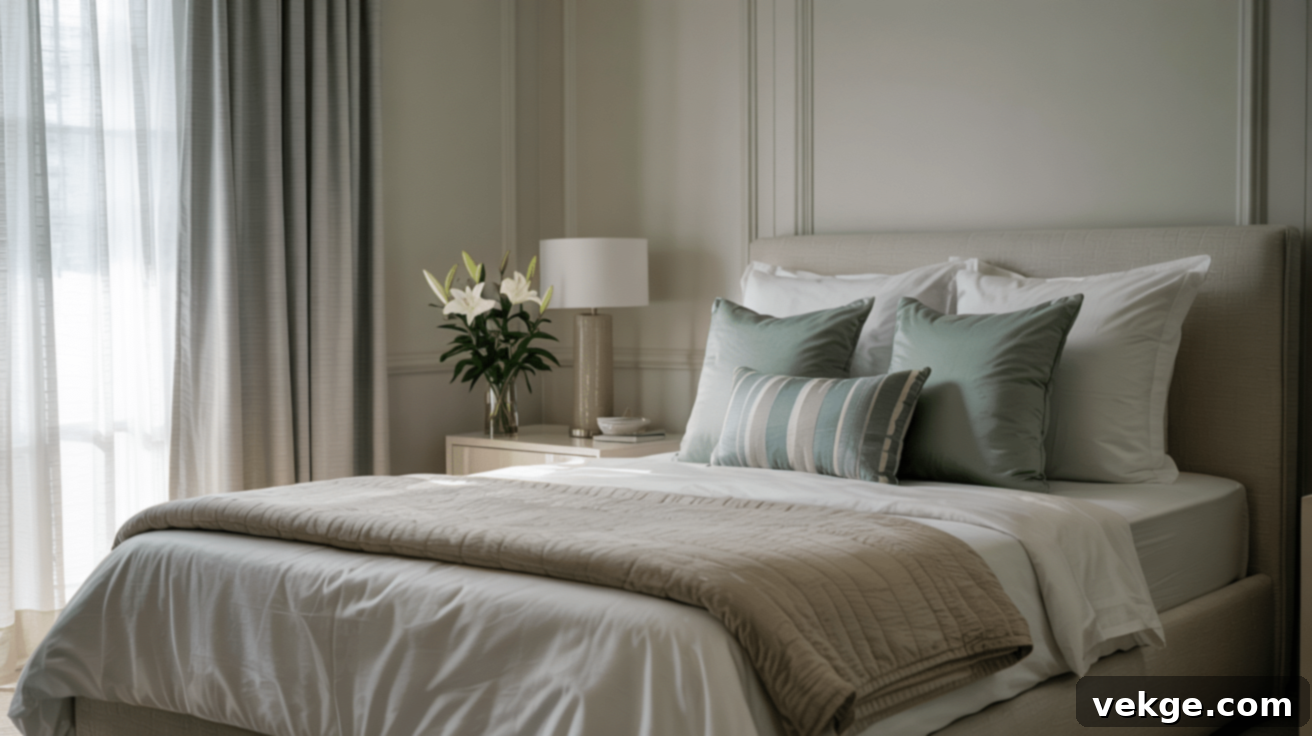
In the bedroom, accented neutrals are paramount for fostering a serene, restful, and calm atmosphere conducive to relaxation. The goal is to create a peaceful retreat that still feels inviting and personal.
- Foundation (60%): Paint the walls a soft, gentle neutral color like a whisper-soft light gray, a warm off-white, or a tranquil beige. Choose neutral bedding, such as crisp white sheets, a cozy beige comforter, or a light gray duvet, to establish a serene and uncluttered foundation. A neutral-colored headboard or substantial bedroom furniture will further balance the space.
- Secondary Layer (30%): Add secondary tones through curtains in a slightly deeper neutral, a textured rug under the bed, or wooden nightstands.
- Accent Pops (10%): Introduce soft pops of color that promote restfulness. Think accent pillows or a cozy throw blanket in muted greens (like sage or moss), tranquil blues (like dusty periwinkle or soft teal), or delicate lavenders. These subtle accents provide visual interest and comfort without disrupting the room’s calming essence.
Kitchen: Functional Elegance
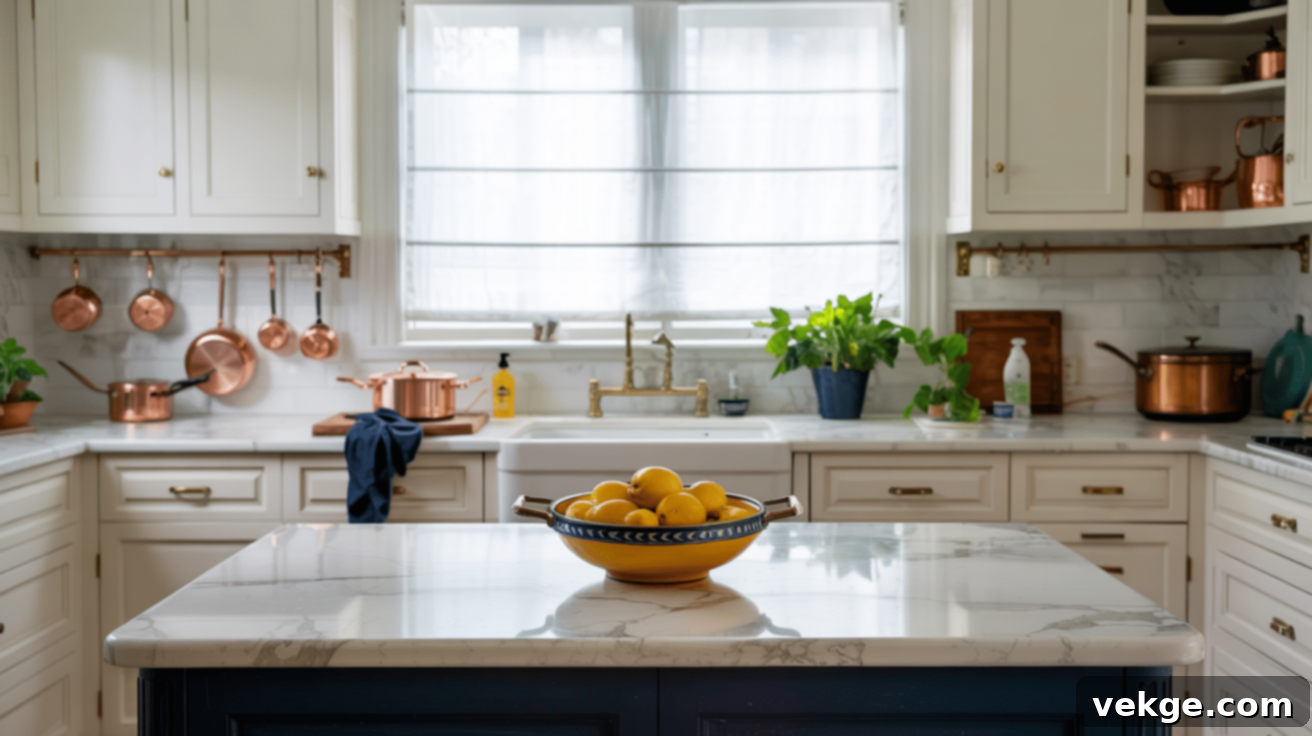
The kitchen, often a highly functional space, can greatly benefit from accented neutrals to feel stylish, clean, and organized without being sterile. Neutrals provide a versatile backdrop for culinary creativity.
- Foundation (60%): Opt for neutral-colored cabinets—classic white, sleek gray, or warm cream—to create a clean, modern, or timeless look. Complement these with neutral countertops, such as white marble, beige quartz, or a light wood butcher block. Neutral floor tiles or cohesive wood flooring will complete the base.
- Secondary Layer (30%): Stainless steel appliances or light wood bar stools can serve as secondary tones.
- Accent Pops (10%): Inject personality and warmth with smaller items. Think a vibrant yellow ceramic fruit bowl, a collection of navy blue dishware displayed in open shelving, a bold red stand mixer, or colorful tea towels. Even a brightly colored backsplash or unique pendant lighting fixtures can serve as powerful accents, bringing life and character to this busy hub.
Bathroom: A Refreshing Oasis
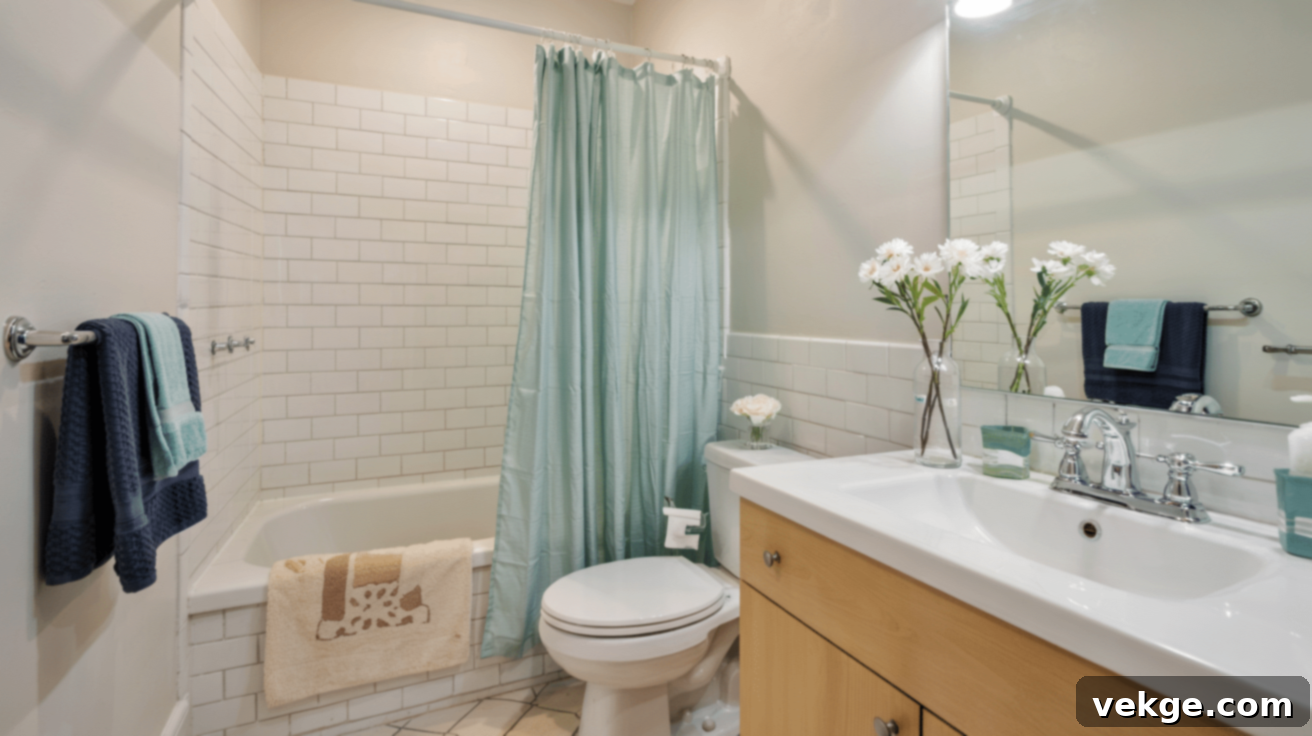
Accented neutrals are particularly effective in bathrooms, especially smaller ones, as they help create a sense of spaciousness, cleanliness, and refreshing calm. This scheme makes the room feel larger and more vibrant without visual clutter.
- Foundation (60%): Use light neutrals for the walls and large surfaces like tiles, such as crisp white, soft beige, or a pale seafoam green. These light colors reflect light, making the room feel more open and airy.
- Secondary Layer (30%): A neutral vanity or a clear glass shower enclosure adds to the clean lines.
- Accent Pops (10%): To add depth and personality, introduce accent colors through carefully chosen accessories. Think plush towels in a bold teal, a vibrant navy blue shower curtain, a set of deep green bath mats, or decorative items like a colorful soap dispenser or a small plant in a patterned pot. This approach invigorates the room with personality while maintaining a sense of serenity.
Advanced Tips for Mastering Accented Neutrals
While an accented neutral scheme is inherently forgiving, applying it with a few advanced strategies can elevate your design from good to truly exceptional. These tips will help you fine-tune your approach and maintain a balanced, visually captivating space that feels cohesive and sophisticated.
1. Avoiding Overuse of Accent Colors: The Power of Restraint
The allure of accent colors can sometimes lead to their overuse, which can quickly make a room feel chaotic and overwhelming, defeating the very purpose of a calming neutral base. To prevent this, steadfastly adhere to the 60-30-10 rule. The key is strategic placement and thoughtful selection.
- Be Deliberate: Don’t just add an accent color everywhere. Choose 2-3 specific areas or items that you want to highlight. For instance, if your accent is blue, have blue in your throw pillows, a piece of art, and perhaps a small decorative object, but not every single accessory.
- Less is More: A few well-chosen, impactful accent pieces will have a greater effect than many small, scattered items. This allows the accents to pop and create a curated, intentional look rather than a cluttered one.
- Unify with a Theme: If using multiple accent colors (e.g., a dominant accent with a very subtle secondary accent), ensure they share a common theme or undertone, or are part of a recognized color palette to maintain cohesion.
2. Creating Visual Interest with Layering and Focal Points
Accented neutrals are perfect for creating dynamic visual interest without resorting to busy patterns or an excess of colors. Use your accent colors to strategically draw attention to specific areas and layer elements for depth.
- Define Focal Points: Employ bold-colored pillows, a striking piece of artwork, a uniquely shaped vase, or a vibrant throw blanket to focus the eye on key features like a majestic fireplace, a comfortable sofa, or a curated gallery wall. These elements act as anchors, grounding the design.
- Layering Textures and Tones: Beyond just color, consider layering different shades of your neutrals and introducing varied textures. For example, a crisp white wall, a chunky knit gray throw, and a smooth ceramic planter—all neutral—can create immense interest before you even add an accent.
- Strategic Contrast: The contrast between a neutral background and a vivid accent is what creates the “pop.” Ensure your accent items stand out clearly against their neutral surroundings.
3. Using Texture to Enhance Accented Neutrals
Texture is a powerful, often underestimated, element in interior design, especially when working with neutrals. It adds richness, depth, and character to a space, making it feel more inviting and visually complex, even with a limited color palette. Texture can make your neutrals sing and your accents feel more integrated.
- Vary Your Materials: Incorporate a variety of materials with different tactile qualities. Think a rustic wooden coffee table paired with a luxurious velvet neutral sofa, or a sleek metallic lamp alongside a chunky knit fabric throw. The interplay of smooth and rough, soft and hard, glossy and matte creates a sophisticated, multi-dimensional environment.
- How Texture Affects Color: Smooth, reflective surfaces (like glass or polished metal) make colors appear brighter and more intense. Rough, absorbent textures (like linen, wool, or unfinished wood) tend to soften and mute colors. Use this knowledge to your advantage. A vibrant accent pillow in a plush velvet will appear more saturated than the same color in a textured linen.
- Add Dimension: Textured wallpaper, natural fiber rugs, woven baskets, and intricate carvings on furniture can all contribute to the tactile experience of a room, enhancing the overall appeal of your accented neutral scheme.
Additional Considerations for a Flawless Finish
Beyond color and texture, two other critical factors significantly influence how your accented neutral scheme is perceived: lighting and the specific materials you choose. Understanding their impact can help you refine your design for the best possible outcome.
Lighting and Its Effect on Accent Colors
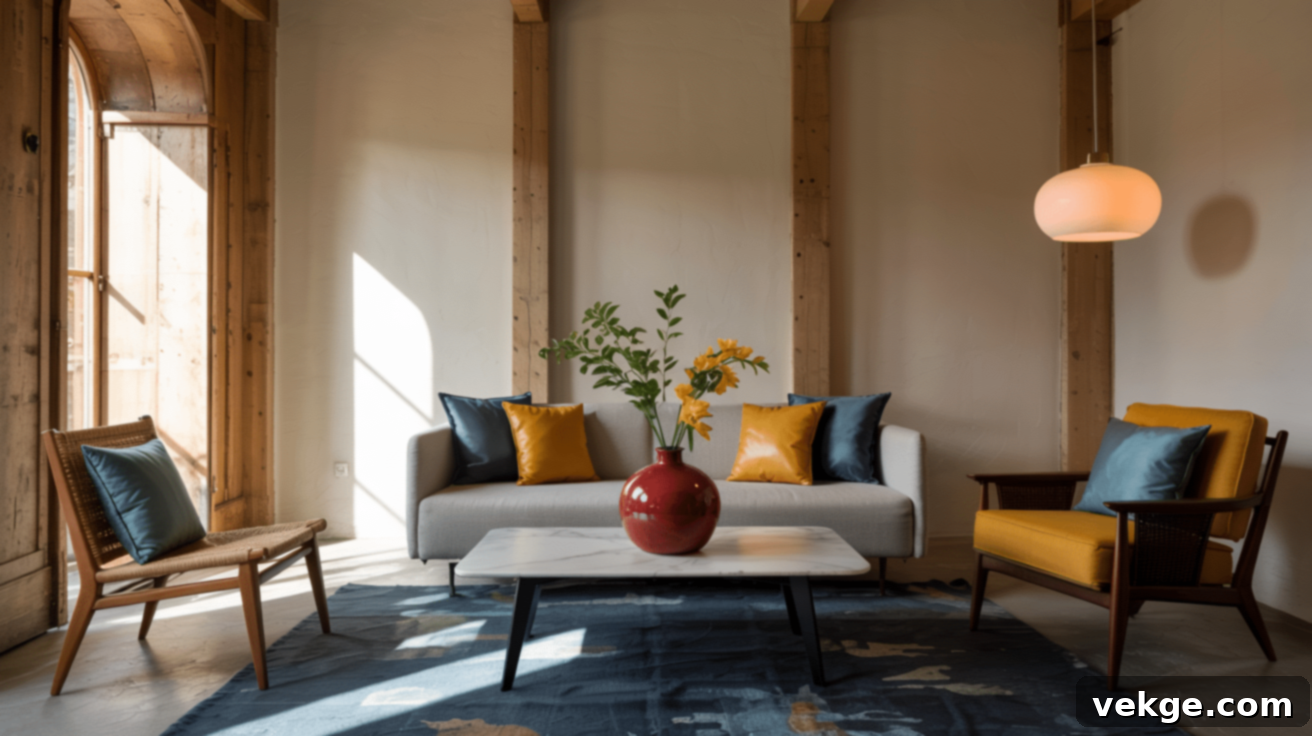
Lighting is a potent design element that can dramatically alter the appearance of colors in a room. A color that looks perfect in a paint swatch might appear entirely different on a large wall, depending on the light it receives.
- Natural Light: Rooms bathed in natural sunlight often make neutral colors feel warmer and more inviting. North-facing rooms, receiving cooler, indirect light, might make cool neutrals appear starker and can even pull gray or blue undertones out of warm neutrals. Conversely, south-facing rooms with warm, direct light can make warm neutrals glow and cool neutrals appear softer.
- Artificial Light: The type of artificial lighting you use is equally important.
- Warm white (2700K-3000K) bulbs cast a yellow glow, enhancing warm neutrals and making cool accents appear richer and deeper.
- Cool white (3500K-4100K) bulbs have a bluer tone, making cool neutrals feel crisp and clean, but can make warm neutrals appear dull.
- Daylight (5000K-6500K) bulbs mimic natural daylight, providing the truest representation of colors, but can sometimes feel too stark for living spaces.
- Test and Observe: Always test paint swatches and observe accent items in your space throughout the day and night. See how they appear under both natural light and your specific artificial lighting to ensure they look consistently fantastic.
Choosing the Right Materials and Textures
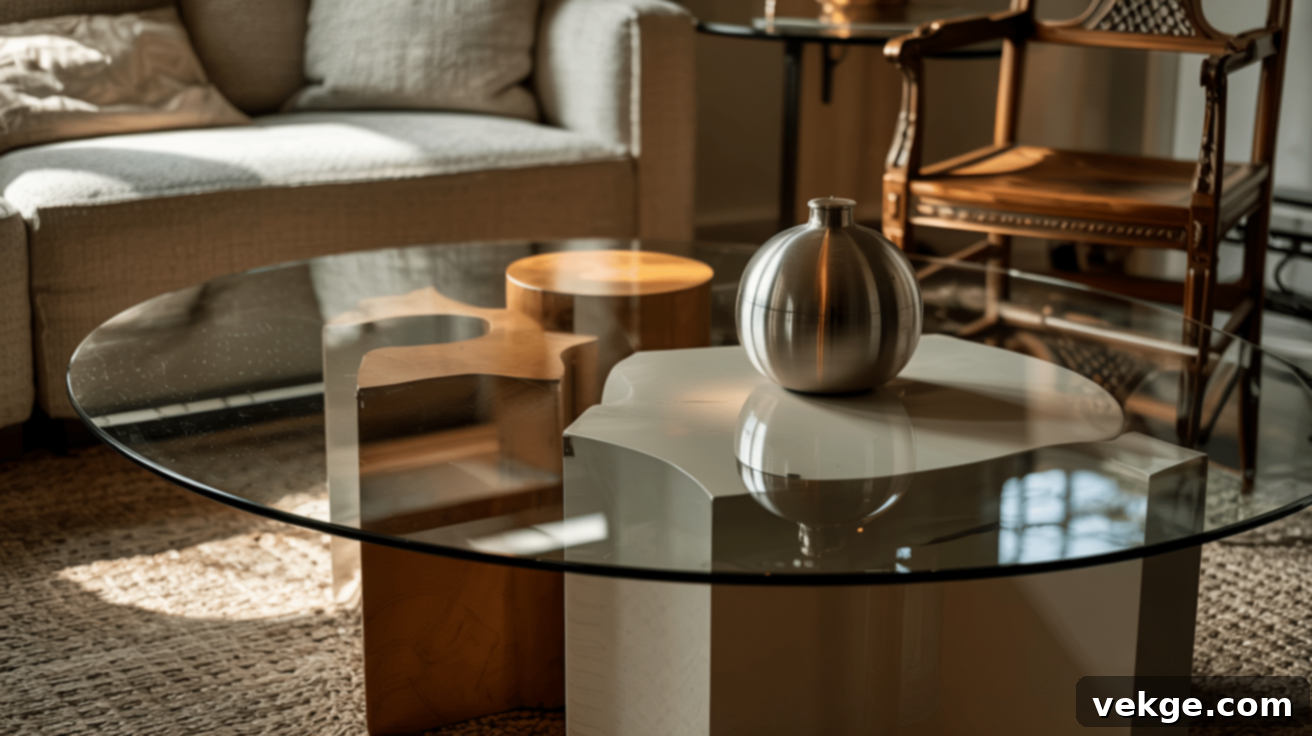
Beyond texture for visual interest, the inherent properties of materials themselves play a crucial role in how colors are perceived and how light interacts with your accented neutral scheme. The right combination can elevate your design.
- Reflective Surfaces: Materials like polished glass, sleek metals (chrome, brass), and glossy lacquers reflect light, making both neutral and accent colors appear brighter, more vibrant, and more saturated. These are excellent for making small accent pieces pop and adding a modern, luxurious touch.
- Absorbent Surfaces: Rougher, more porous textures found in materials like unpolished wood, natural stone, linen, wool, and matte finishes tend to absorb light. This softens colors, making them appear more muted and earthy. They contribute to a cozy, natural, and grounded feel, perfect for enhancing warm neutrals and making bold accents feel more approachable.
- Mixing Finishes: The most compelling designs often mix matte and glossy finishes. For instance, a matte painted wall with a glossy accent vase or a smooth wooden floor paired with a textured wool rug. This interplay creates dynamic visual interest and prevents a room from feeling flat, bringing out the best in your accented neutrals and ensuring a sophisticated, layered look.
Wrapping Up: Your Journey to a Beautifully Accented Home
You’ve now gained a comprehensive understanding of the accented neutral color scheme, equipping you with the knowledge and tools to create a home that feels both balanced and deeply welcoming. By embracing the versatility of neutral tones as your foundational canvas and strategically introducing bold, impactful accent colors, you have the power to effortlessly enhance any room in your home.
Whether you’re embarking on a full living room renovation, refreshing your personal bedroom sanctuary, updating the functional elegance of your kitchen, or transforming your bathroom into a tranquil oasis, the judicious application of color makes an undeniable difference. Remember the 60-30-10 rule as your guiding star, allowing you to confidently balance your palette and create spaces that resonate with your personal style.
So, take the insights you’ve gathered from this guide and begin to apply them to your own living spaces. Experiment with different textures, consider the interplay of light, and most importantly, have fun with the process of making your house truly feel like home. The journey to a beautifully accented home starts now.
For more inspiring ideas and expert tips on interior design and color theory, we encourage you to explore other helpful blogs and resources on our website. Continue enhancing your space and celebrating the timeless elegance of the accented neutral color scheme!
